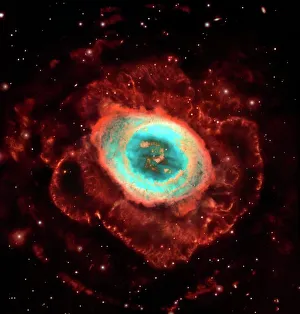Ring Nebula Collection
The Ring Nebula, also known as M57, is a stunning celestial object that has captivated astronomers and stargazers alike
All Professionally Made to Order for Quick Shipping
The Ring Nebula, also known as M57, is a stunning celestial object that has captivated astronomers and stargazers alike. This Hubble image, labeled C017 / 3725, showcases the intricate beauty of this cosmic wonder. In the late 19th century, Paul Henry and Prosper Henry immortalized their views of the Andromeda Nebula and the Ring Nebula in an exquisite engraving titled "Nebuleuse de la Lyre. " Their artwork perfectly captures the ethereal nature of these distant galaxies. Fast forward to modern times, NASA's Spitzer Space Telescope discovered a delicate flower-like structure within the Ring Nebula. The image reveals intricate details that resemble petals surrounding its core. It's truly a sight to behold. Within this nebula lies WR 134, a Wolf-Rayet star that shines brightly amidst swirling gases and dust particles. Its intense stellar winds have sculpted the surrounding material into an awe-inspiring display. Messier 57 is another name for this celestial gem - aptly named "the Ring Nebula" due to its distinctive shape resembling a ring or donut. Located in the constellation Lyra, it serves as a beacon among countless stars in our vast universe. Dating back to the 19th century, artists attempted to capture its allure through various mediums. One such depiction portrays its enchanting form against a backdrop of shimmering stars - an homage to its timeless beauty. Whether referred to as M57 or simply "Ring Nebula, " this cosmic masterpiece continues to fascinate astronomers with its enigmatic qualities. As we gaze upon it from Earth or through telescopes like Hubble or Spitzer Space Telescope, we are reminded of our place in this vast cosmos and humbled by its sheer magnificence.










